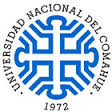JavaScript is disabled for your browser. Some features of this site may not work without it.
Mostrar el registro sencillo del ítem
| dc.coverage.spatial | ARG | es_ES |
| dc.creator | Schenone, Luca | |
| dc.creator | Modenutti, Beatriz | |
| dc.creator | Martyniuk, Nicolás | |
| dc.creator | Bastidas Navarro, Marcela | |
| dc.creator | Laspoumaderes, Cecilia | |
| dc.creator | Balseiro, Esteban | |
| dc.date | 2021-02-26 | |
| dc.date.accessioned | 2021-02-25T13:52:10Z | |
| dc.date.available | 2021-02-25T13:52:10Z | |
| dc.identifier | ||
| dc.identifier | http://rdi.uncoma.edu.ar/handle/uncomaid/16092 | |
| dc.description.abstract | 1. Pelagic microbial food webs are structured by zooplankton through grazing and nutrient recycling. Cladocerans and copepods are assumed to display different effects on the microbial loop by grazing on different prey sizes and releasing phosphorus (P) differentially. Here, we assessed this effect of differential zooplankton grazing and nutrient recycling on the microbial loop dynamics using both experimental and modelling approaches combined. 2. We performed field incubation experiments in an oligotrophic mountain lake (North-Patagonian Andes) using the natural microbial community and the two dominant zooplankton taxa: a cladoceran (Diaphanosoma chilense) and a copepod (Boeckella gibbosa). The effect of zooplankton grazing and nutrient recycling were assessed separately in different treatments with direct and indirect zooplankton presence, respectively. We built a mechanistic model to estimate zooplankton grazing and P recycling and prey P quotas. The model was parameterized with the results from our field experiment and with prior information from size-based traits and zooplankton C:P using a Bayesian approach. Laboratory experiments for zooplankton P excretion were also performed to test the predictive accuracy of our model. 3. Our model, parameterized with the field experiment results, showed that copepods and cladocerans have contrasting effects on the microbial loop. D. chilense grazed mainly on picoplankton while B. gibbosa on nanoflagelates and algae. D. chilense reduced the biomass and increased P quota of picoplankton, and reduced the P quota of nanoflagellates. On the contrary, B. gibbosa released more P, increasing the picoplankton biomass and reducing the biomass of nanoflagellates, but increasing its P quota. 4. Based on our experimental and model results, copepods would favour higher P acquisition rates for cladocerans by releasing more P for picoplankton. On the other hand, cladocerans would have a mixed effect on the main food items of copepods by increasing P quotas of the strict osmotrophic algae but decreasing P quotas of nanoflagellates. 5. Our mechanistic model is useful to assess quantitatively key planktonic variables, which are usually difficult to measure in the field, such as zooplankton P excretion rates and microbial P quotas, by using more conspicuous variables such as biomass of the different microbial compartments and dissolved and particulate P concentrations. | es_ES |
| dc.format | application/ms-excel | es_ES |
| dc.language | eng | es_ES |
| dc.publisher | Universidad Nacional del Comahue. Instituto de Investigaciones en Biodiversidad y Medioambiente | es_ES |
| dc.rights | Atribución-NoComercial-CompartirIgual 2.5 Argentina | es_ES |
| dc.rights.uri | https://creativecommons.org/licenses/by-nc-sa/2.5/ar/ | es_ES |
| dc.source | Freshwater Biology | |
| dc.subject | Bayesian approach | es_ES |
| dc.subject | Phosphorus quota | es_ES |
| dc.subject | Bacterivory | es_ES |
| dc.subject | Mixotrophic nanoflagellates | es_ES |
| dc.subject | Ecological stoichiometry | es_ES |
| dc.subject | https://purl.org/becyt/ford/1.5 | |
| dc.subject.other | Ciencias de la Tierra y Medio Ambiente | es_ES |
| dc.title | Modelling key variables for understanding the effects of grazing and nutrient recycling by zooplankton on the freshwater microbial loop | es_ES |
| dc.type | conjunto de datos | es |
| dc.type | other | eu |
| dc.type | acceptedVersion | eu |
| dc.description.fil | Fil: Schenone, Luca. Universidad Nacional del Comahue. Instituto de Investigaciones en Biodiversidad y Medioambiente; Argentina. | es_ES |
| dc.description.fil | Fil: Schenone, Luca. Consejo Nacional de Investigaciones Científicas y Técnicas; Argentina. | es_ES |
| dc.description.fil | Fil: Modenutti, Beatriz. Universidad Nacional del Comahue. Instituto de Investigaciones en Biodiversidad y Medioambiente; Argentina. | es_ES |
| dc.description.fil | Fil: Modenutti, Beatriz. Consejo Nacional de Investigaciones Científicas y Técnicas; Argentina. | es_ES |
| dc.description.fil | Fil: Martyniuk, Nicolás. Universidad Nacional del Comahue. Instituto de Investigaciones en Biodiversidad y Medioambiente; Argentina. | es_ES |
| dc.description.fil | Fil: Martyniuk, Nicolás. Consejo Nacional de Investigaciones Científicas y Técnicas; Argentina. | es_ES |
| dc.description.fil | Fil: Bastidas Navarro, Marcela. Universidad Nacional del Comahue. Instituto de Investigaciones en Biodiversidad y Medioambiente; Argentina. | |
| dc.description.fil | Fil: Bastidas Navarro, Marcela. Consejo Nacional de Investigaciones Científicas y Técnicas; Argentina. | |
| dc.description.fil | Fil: Laspoumaderes, Cecilia. Universidad Nacional del Comahue. Instituto de Investigaciones en Biodiversidad y Medioambiente; Argentina. | |
| dc.description.fil | Fil: Laspoumaderes, Cecilia. Consejo Nacional de Investigaciones Científicas y Técnicas; Argentina. | |
| dc.description.fil | Fil: Balseiro, Esteban. Universidad Nacional del Comahue. Instituto de Investigaciones en Biodiversidad y Medioambiente; Argentina. | |
| dc.description.fil | Fil: Balseiro, Esteban. Consejo Nacional de Investigaciones Científicas y Técnicas; Argentina. | |
| dc.relation.alternativeid | https://onlinelibrary.wiley.com/doi/full/10.1111/fwb.13835 | |
| dc.cole | Datos primarios de investigación | es_ES |



